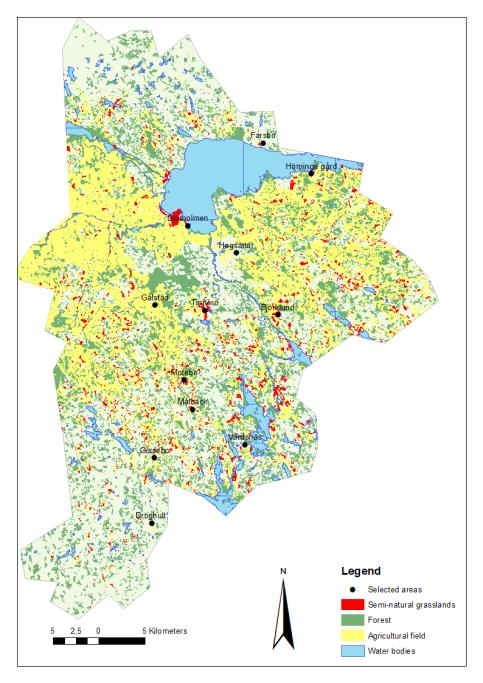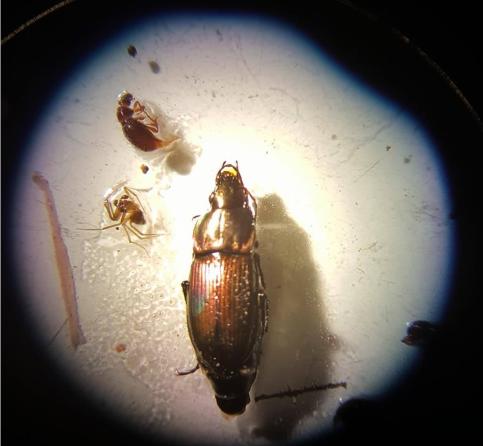Site selection

Twelve semi-natural grassland in the municipality of Linköping were choosen with the help of TUVA and KNAS (Jordbruksverket 2015, Naturvårdsverket 2015) . The twelve areas were split into three separate groups depending of their connectivity to other semi-natural grasslands and pastures. The three groups were isolated, which had the least amount of neighbouring grasslands, intermediate, which had moderate amount of neighbouring grasslands, and connected, which had the most amount of neighbouring grasslands.
Deep pitfall traps (8.5 cm diameter and 10 cm deep) were put flush to the ground and filled with water and detergent, the traps were left opened for five days before being emptied and closed. Five traps were put in each area making the total number of pitfall traps 60. This process was repeated after about three weeks.The traps locations were spread randomly over the habitat.
Sampling and identifying

After the trapping the samples were cleaned and all other animals except the carabids were removed. To make identification easier all Carabids over 5 mm were mounted on pins, these carabids were identified using Lindroth (1961) as well as two websites (Nordic Coleoptera group 2017, Iconographina Coleopterorum Poloniae 2017) for reference pictures. The smaller carabids were sent to consultant and beetle expert Sven Lennartsson for identification.
To find mean body size for the species Lindroth (1961) was used. This book was also used to find the habitat preference for each species. The habitat categories were generalist, grassland, forest, field and wet. The body size categories were taken from Cole et al. (2002), the categories were very small (<5mm), small (5-10 mm), medium (11-15 mm) and large (15< mm). For wing lengths a study from Scotland (Ribera et al. 2001), a study from Mt. Medvednica (S˘eric Jelaska et al. 2009), as well as Lindroth (1961), were used. Only 37 of 51 wing length could be determined using these sources. The wing lengths from these studies were categorised as short and long wings and no measurements for the wing were used. So this study also used the two groups, short winged (brachypterous) and long winged (macropterous).
Analysis
To estimate diversity for the different study sites Shannon-Weiner diversity index was used. One-way ANOVA were performed to test the diversity of grasslands in different isolated areas. The ANOVA tested body morphology, diversity and habitat preference against isolation. Surrounding areas were also tested against the isolation groups to see if there was a difference in surrounding areas.
Indicator species value was calculated to find potential indicator species based on isolation. The Indicator species value (IndVal) ranges from 0 to 1, with a 1 showing perfect indicator species. A correspondence analysis (CA) was preformed with fitted environmental vectors showing body size, wing length and habitat preference.
Responsible for this page:
Director of undergraduate studies Biology
Last updated:
05/03/18
